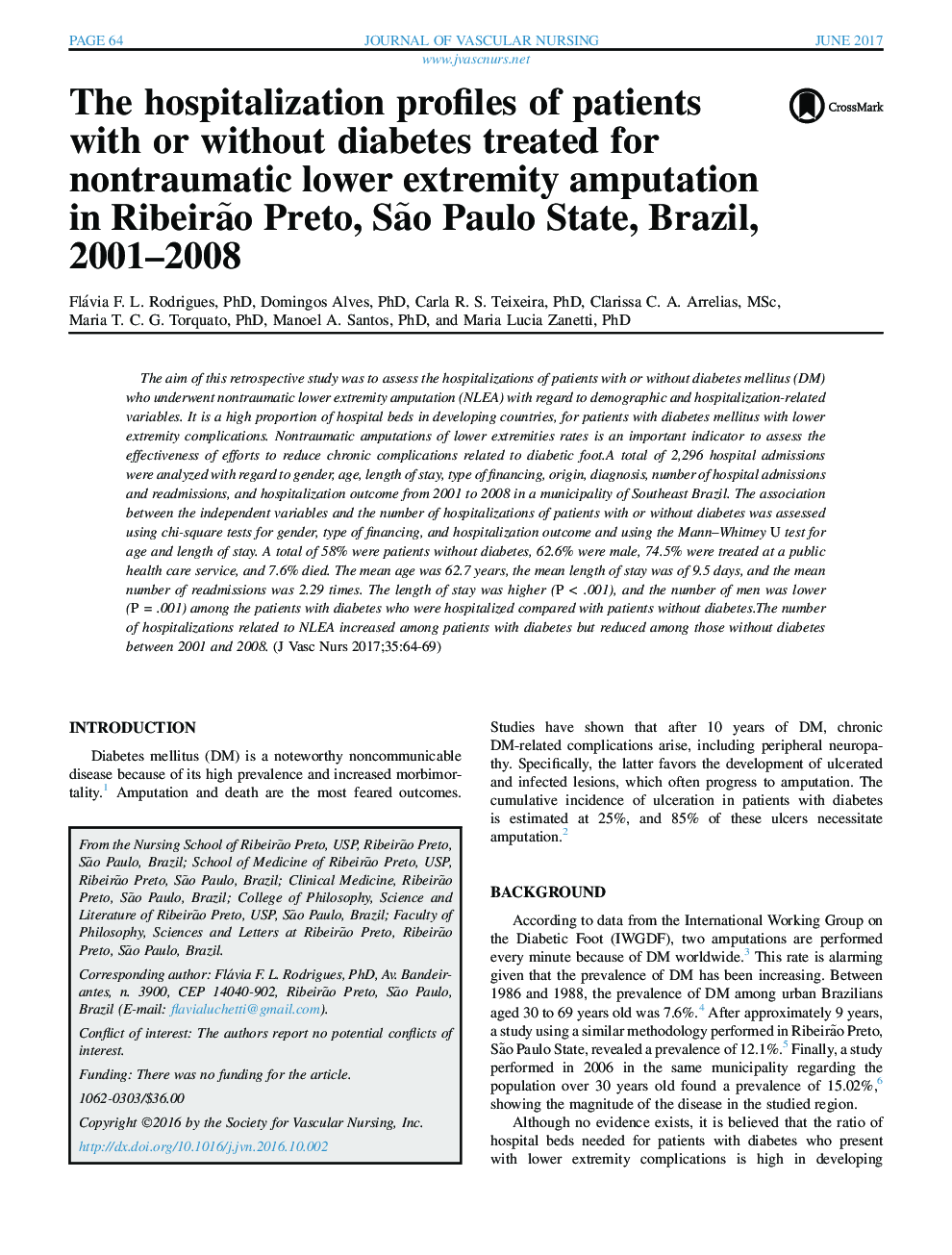| Article ID | Journal | Published Year | Pages | File Type |
|---|---|---|---|---|
| 5570802 | Journal of Vascular Nursing | 2017 | 6 Pages |
Abstract
The aim of this retrospective study was to assess the hospitalizations of patients with or without diabetes mellitus (DM) who underwent nontraumatic lower extremity amputation (NLEA) with regard to demographic and hospitalization-related variables. It is a high proportion of hospital beds in developing countries, for patients with diabetes mellitus with lower extremity complications. Nontraumatic amputations of lower extremities rates is an important indicator to assess the effectiveness of efforts to reduce chronic complications related to diabetic foot.A total of 2,296 hospital admissions were analyzed with regard to gender, age, length of stay, type of financing, origin, diagnosis, number of hospital admissions and readmissions, and hospitalization outcome from 2001 to 2008 in a municipality of Southeast Brazil. The association between the independent variables and the number of hospitalizations of patients with or without diabetes was assessed using chi-square tests for gender, type of financing, and hospitalization outcome and using the Mann-Whitney U test for age and length of stay. A total of 58% were patients without diabetes, 62.6% were male, 74.5% were treated at a public health care service, and 7.6% died. The mean age was 62.7 years, the mean length of stay was of 9.5 days, and the mean number of readmissions was 2.29 times. The length of stay was higher (P < .001), and the number of men was lower (P = .001) among the patients with diabetes who were hospitalized compared with patients without diabetes.The number of hospitalizations related to NLEA increased among patients with diabetes but reduced among those without diabetes between 2001 and 2008.
Related Topics
Health Sciences
Nursing and Health Professions
Nursing
Authors
Flávia F.L. PhD, Domingos PhD, Carla R.S. PhD, Clarissa C.A. MSc, Maria T.C.G. PhD, Manoel A. PhD, Maria Lucia PhD,
